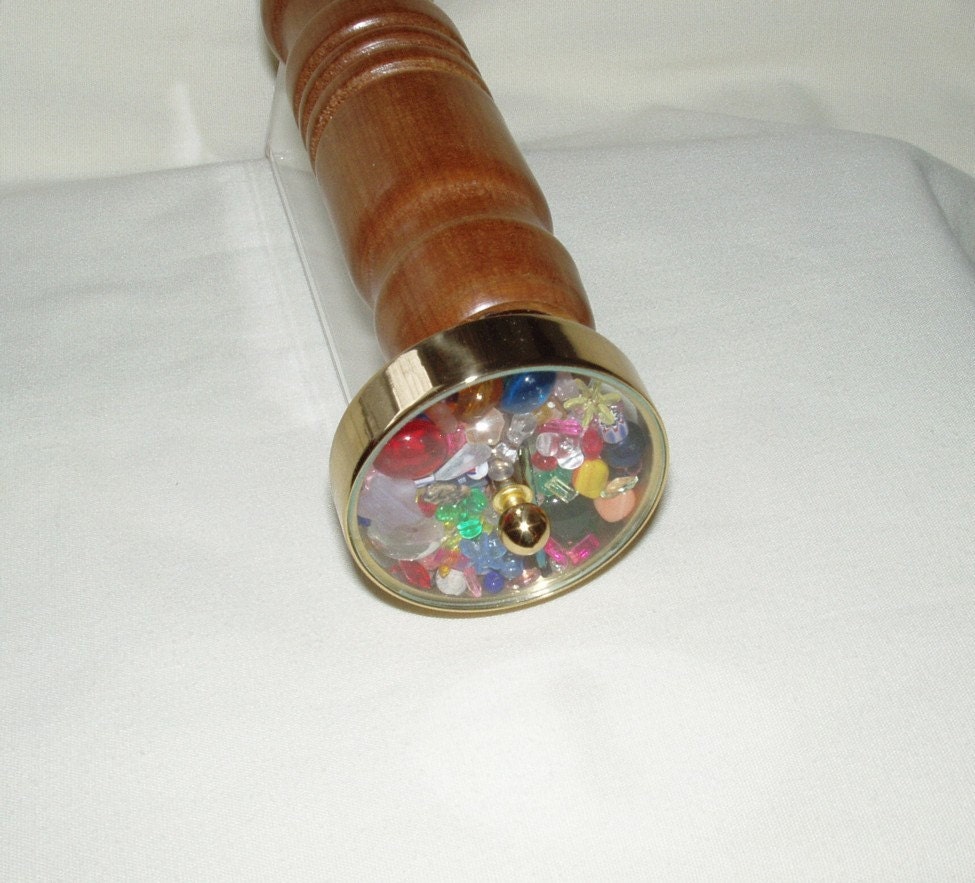Arguably the most important part of a kaleidoscope is the "object center" -- that is, what it is that one "views" through the eye piece and the mirror configuration.
There are a variety of "object centers" -- oil cell, oil wand, tumble cell, tumble (image wheel), fixed image wheel, etc. I suppose, theoretically, most anything can be "viewed" depending on the design and construction of the kaleidoscope. The ones just mentioned are the most common.
Although all types have their adherents, my personal favorite is a tumble cell or tumble wheel (image wheel). To me, the beauty of them is that you never see the same image twice as the materials inside are constantly tumbling and re-arranging themselves. In addition, you get motion as well as changing images.
One can use a wide variety of materials in a tumble cell/wheel -- fragments of rocks and minerals, gemstones, beads, colored glass, colored plastic, glass ampules with liquid filling which then tumble in the cell, shells, bits of metal, etc. Then, just to make it more interesting, some artists "mix and match" materials to achieve the desired "view". One can even use sand. I designed and crafted a 'scope for a customer in Australia one time that used sand from her favorite beach along with some shell fragments she had collected. It was certainly a unique "view".
Picture of an image wheel kaleidoscope I crafted from reclaimed New Zealand Kauri wood and posted on my web store www.wrightmade.com. (See that site for information on the Kauri wood.)
To see all of my current work go to http://www.etsy.com/shop/wrightmade
- - - - - - - - - - - - - - - - - - - - - - - - - - - - - - - - - - - - - - - - - - - - - - - -




.jpg)



No comments:
Post a Comment